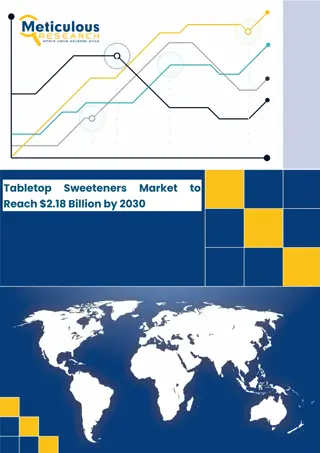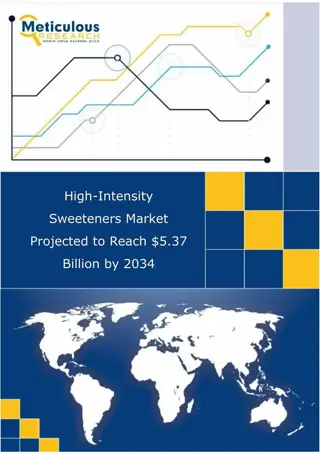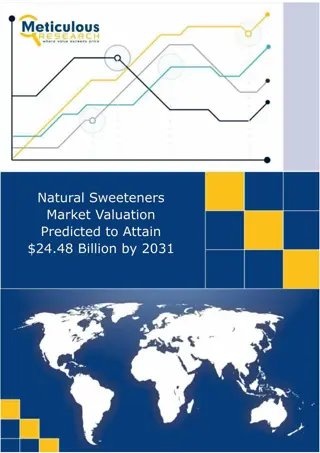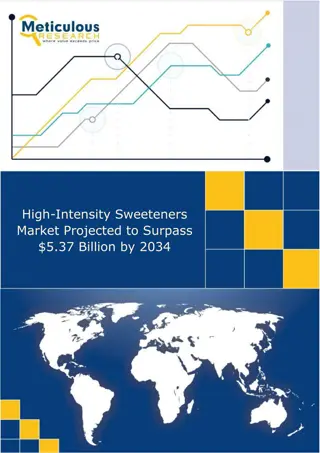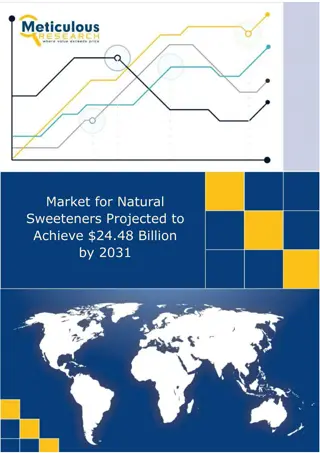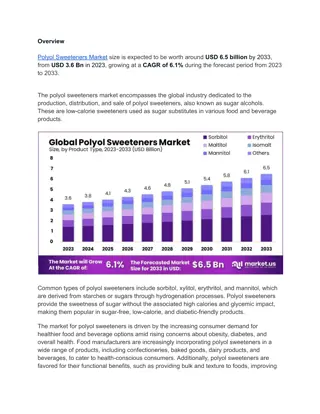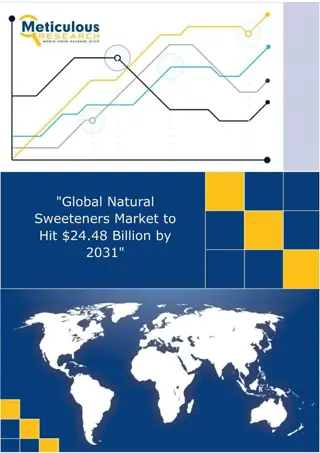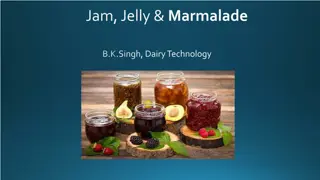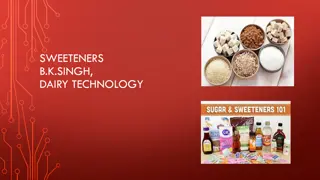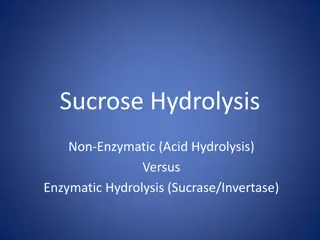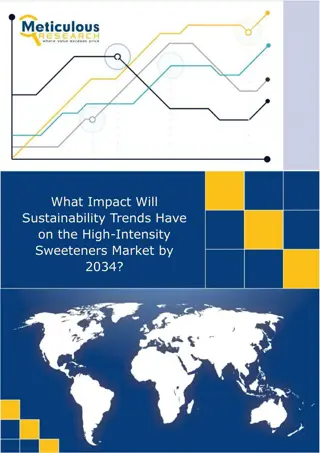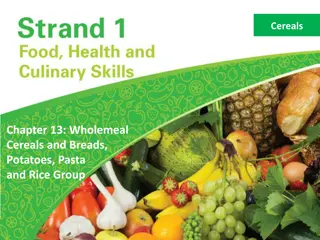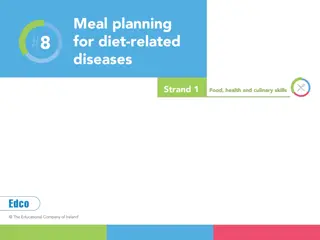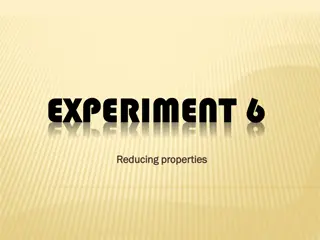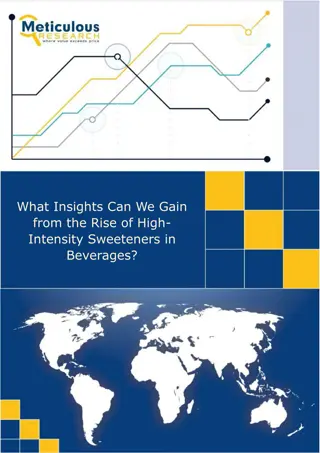Understanding Nutritive Sweeteners and Added Sugars in the American Diet
Americans consume high amounts of added sugars daily, with teenagers accounting for a significant portion. Sugar intake has significantly increased over the years, leading to concerns about health implications. Various organizations recommend limiting added sugar intake to maintain overall health, emphasizing the importance of being mindful of sugar sources in food and beverages.
Download Presentation

Please find below an Image/Link to download the presentation.
The content on the website is provided AS IS for your information and personal use only. It may not be sold, licensed, or shared on other websites without obtaining consent from the author. Download presentation by click this link. If you encounter any issues during the download, it is possible that the publisher has removed the file from their server.
E N D
Presentation Transcript
Nutritive Sweeteners: Sugars and Sugar Alcohols
Did you know? Americans consume 22 tsp. of added sugar each day! Teenagers (ages 12-18) consume 28 tsp. (476 calories!) of added sugars each day - accounting for 21% of their total calorie intake. A 12-ounce can of sugar-sweetened soda contains about 150 calories and 9 tsp. of sugar. Diet (low calorie) soda contains no sugar.
Trends in Intake Sugar intake in the United States has increased by >40 fold since the American Revolution Consumption of added sugars decreased from 1999-2000 to 2007-2008 (NHANES data) 100 g/day added sugar intake in 1999-2000 77 g/day added sugar intake in 2007-2008 On average, adults in the US consume 14.6% of energy (calories) from added sugars
Recommended Daily Allowance 130 g/day of carbohydrate is needed = glucose requirement That s 520 kcals.... 43% of a 1200 kcal diet 35% of a 1500 kcal diet 26% of a 2000 kcal diet
Dietary Guidelines for Americans Recommendation to limit the intake of foods that contain added sugar. Guidelines do not distinguish between sucrose (table sugar) or other added sugar sources. Added sugars contribute about 15 % of the total energy (calories) in American diets - the major food sources of added sugars are soda, energy drinks, sports drinks.
American Heart Association (AHA) Limit the amount of added sugars in your diet Focus on all added sugars, not just one type, such as high fructose corn syrup Women: limit to no more than 100 calories per day from added sugar (~6 teaspoons of sugar) Men: limit to no more than 150 calories per day from added sugar (~9 teaspoons of sugar)
Sugars added to food and beverages Added sugar is defined as not naturally occurring, but is not distinguished on Nutrition Facts Label Can be identified by reading ingredient list on food label Examples include: anhydrous dextrose, lactose, brown sugar, malt syrup, maltose, corn syrup, molasses, nectars, fructose, honey, raw sugar, sucrose, invert sugar, etc.
Safety and Quality in Foods Sugars are added to foods to: Inhibit microbial growth by binding water in jams and jellies Add texture, flavor, and color to baked goods Support the growth of yeast for leavening or fermentation Contribute volume in ice cream, baked goods, and jams Enhance the creamy consistency of frozen desserts Enhance the crystallization of confectionary products Help to maintain the natural color, texture, and shape of preserved fruits
Nutritive Sweeteners Sugars provide energy as carbohydrates at 4 calories per gram (kcal/g) Examples: glucose, fructose, agave nectar, honey, high fructose corn syrup, corn syrup, sucrose, lactose Sugar alcohols provide from 0 to 2.6 kcal/g Examples: erythritol, xylitol, mannitol, sorbitol
Glucose Monosaccharide (single sugar molecule) The main source of energy for the body and is needed by brain cells Glucose is produced when starch is digested Makes up exactly 1/2 of the sugar in sucrose and nearly 1/2 of the sugar in high fructose corn syrup
Fructose Monosaccharide (single sugar molecule) Found in fruits, honey, and root vegetables Added to foods and beverages in the form of crystalline fructose Makes up 1/2 the sugar in sucrose and a bit more that of the sugar in high fructose corn syrup
Lactose Disaccharide (2 sugar units) Found in milk and dairy foods Added to many foods
Sucrose aka table sugar Disaccharide (2 sugar units) Includes raw sugar, granulated sugar, brown sugar, confectioner's sugar Sources - sugar cane and sugar beet
High Fructose Corn Syrup (HFCS) HFCS - introduced to the food and beverage industry as a liquid alternative to sucrose in the late 1960s Produced from corn syrup, which is typically 100% glucose Syrup undergoes enzymatic processing to increase fructose content 55% Fructose:45% Glucose
Agave Nectar Sugar from the Agave tequiliana (tequila) plant Contains fructose, glucose and some fructans (oligosaccharides - fiber) Agave nectar is about 1 times sweeter than sucrose due to its fructose content
Glycemic Index of Sugars Using white bread as a control at 100 Glucose 149 Fructose 16 Sucrose 65 Lee & Wolever. Eur J Clin Nutr. 1998;52(12):924-8.
Glycemic Index and Health High Glycemic Index - risk factor for the development of type 2 diabetes and cardiovascular disease. Low Glycemic Index may protect against the development of obesity and may improve HbA1c in those with diabetes
Safety The Food and Drug Administration (FDA) has examined numerous sugars, including glucose, dextrose, fructose, sucrose, high fructose corn syrup, lactose, and maltose, and determined that they are generally recognized as safe (GRAS). According to the FDA, sugars for use in foods have a proven track record of safety based either on a history of use or on published scientific evidence, and can be used in food products without further FDA approval. Background on Carbohydrates & Sugars from the International Food Information Council (IFIC)
HFCS vs. Sucrose Controversy + Speculation + Confusion Scientific consensus - no metabolic or endocrine response differences between consuming HFCS vs. sucrose related to obesity or any other adverse health outcome. Rippe & Angelopoulos. 2013. Sucrose, High-Fructose Corn Syrup, and Fructose, Their Metabolism and Potential Health Effects: What Do We Really Know? Adv Nutr, 4, 236-245.
Sorbitol 2.6 kcal per gram 50%-70% as sweet as sucrose noncariogenic a laxative effect from a daily load of 50 g
Mannitol 50%-70% as sweet as sucrose low-energy sweetener at 1.6 kcal per gram cooling effect to mask bitter taste non-cariogenic laxative effect from a daily load of 20 g
Xylitol As sweet as sucrose and anticariogenic (2.4 kcal/g) Erythritol 60%-80% as sweet as sucrose and anticariogenic (0.2 kcal/g)
Disaccharide polyols Isomalt 45% to 65% as sweet as sucrose (2 kcal/g) Lactitol 30%-40% as sweet as sucrose(2 kcal/g) Maltitol 90% as sweet as sucrose (2.1 kcal/g) Isomaltulose 50% as sweet as sucrose; used as a slow release carbohydrate source (4 kcal/g) Trehalose 45% as sweet as sucrose (3.6 kcal/g)
Conclusions Decreasing intake of added sugars is recommended to improve health. This may be best achieved by decreasing intake of beverages with added sugars. Current research indicates that there is no difference between health impact of the added sugars, sucrose or HFCS.
Key References U.S. Department of Agriculture and U.S. Department of Health and Human Services. Dietary Guidelines for Americans, 2010. 7th Edition, Washington, DC: U.S. Government Printing Office, December 2010. Position of the Academy of Nutrition and Dietetics: Use of Nutritive and Nonnutritive SweetenersJ Acad Nutr Diet. 2012;112:739-758. Rippe & Angelopoulos. 2013. Sucrose, High-Fructose Corn Syrup, and Fructose, Their Metabolism and Potential Health Effects: What Do We Really Know? Adv Nutr, 4, 236-245. Background on Carbohydrates & Sugars from the International Food Information Council (IFIC)
Credits This presentation adapted for XXXXX county and presented by: Xxxxxxxx Xxxxxxxx County Cooperative Extension Office Xxxxxxxx phone number/address/email This presentation prepared by: Wendy J. Dahl PhD RD Assistant Professor, FSHN Extension Specialist University of Florida wdahl@ufl.edu
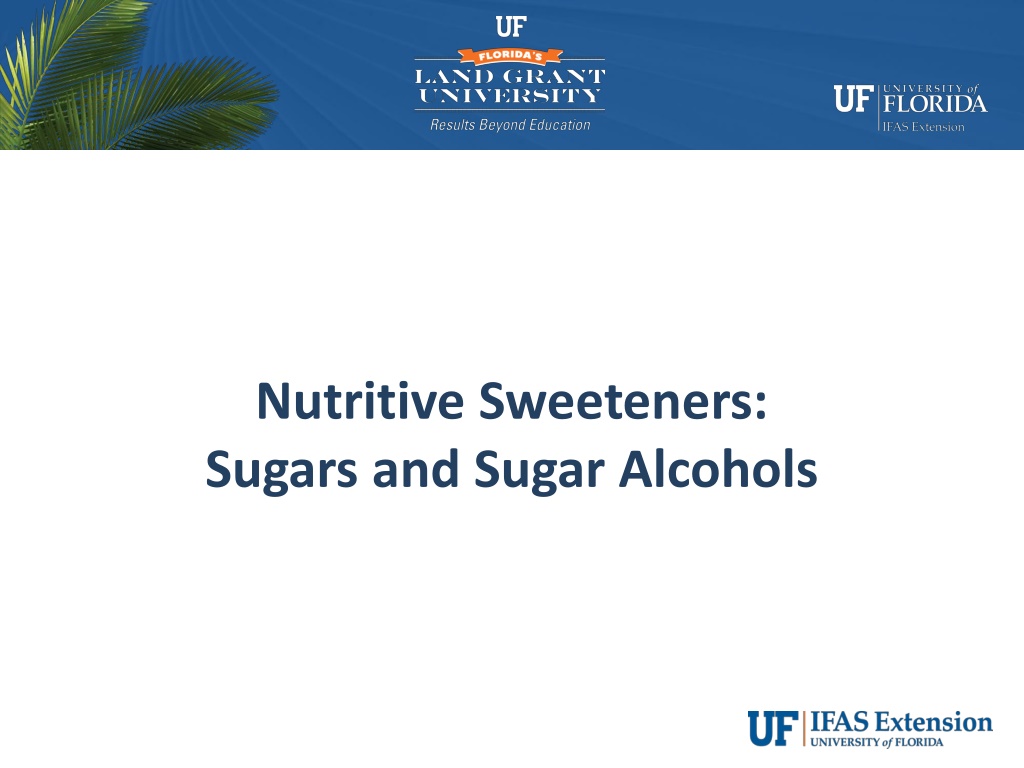

![READ [PDF] Dash diet Cookbook for beginners: 365 days of simple, healthy, low-s](/thumb/2057/read-pdf-dash-diet-cookbook-for-beginners-365-days-of-simple-healthy-low-s.jpg)


